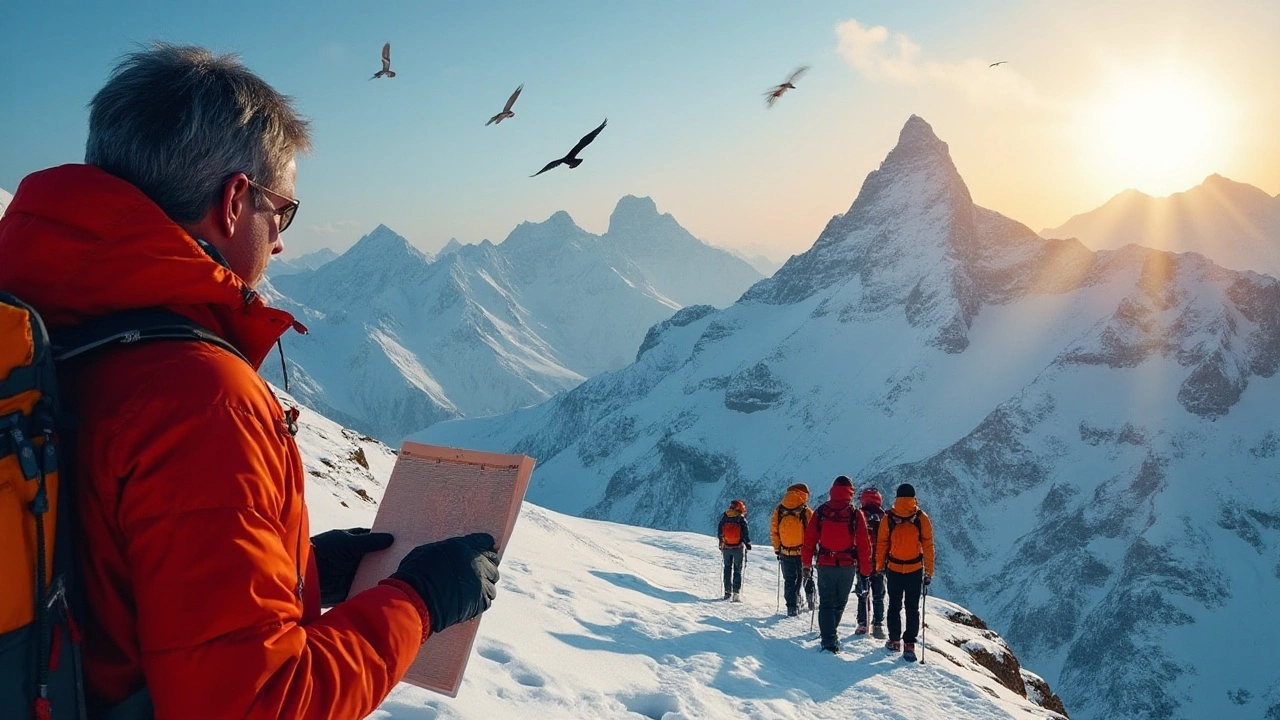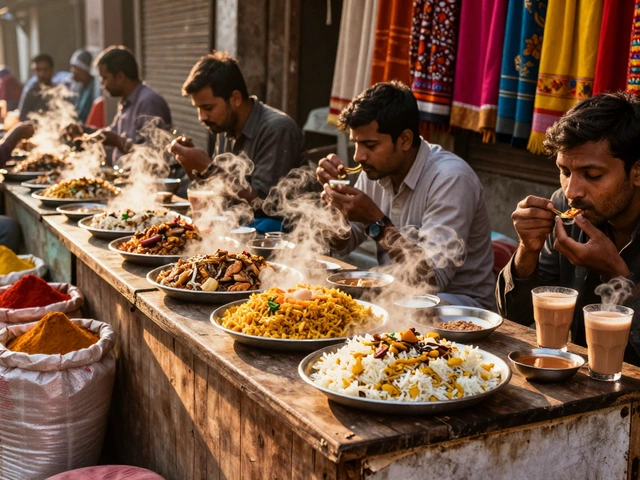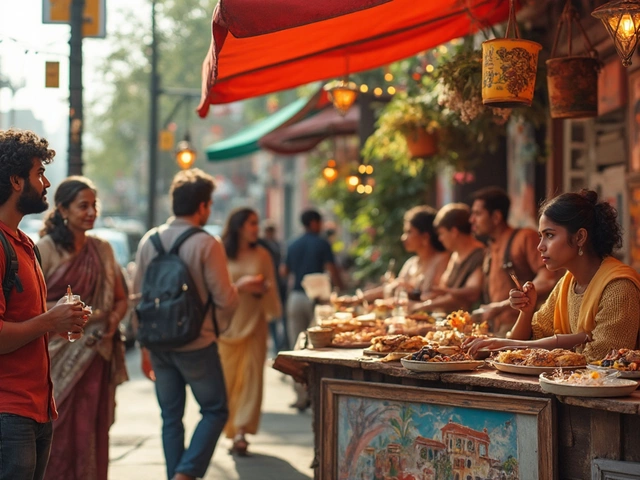Trekking in India is nothing short of an adventurous symphony. It blends thrilling challenges with spectacular scenery, taking you through a spectrum of landscapes that range from the towering peaks of the Himalayas to the more tropical backdrops of the Western Ghats. This land of diverse terrains offers something special for every kind of trekker.
Whether you're a seasoned hiker or a novice enthusiast, India's trails provide rich experiences and stunning vistas. Imagine walking through lush valleys, basking in the glow of sunrise over snow-capped mountains, or navigating dense forests echoing with wildlife. Each step is wrapped with stories of the local culture and the timeless allure of nature.
Embarking on a trek in India is more than just an outdoor activity; it's a journey that connects us to something deeper within the natural world. In this guide, we explore some of the best places to trek across India, each offering its own unique charm and allure.
- India's Diverse Trekking Geography
- Top Trekking Routes in the Himalayas
- The Western Ghats: A Trekker's Paradise
- Cultural Insights on Indian Treks
- Tips for a Successful Trekking Experience
- Essential Gear and Preparation
India's Diverse Trekking Geography
India is a tapestry of natural wonders, offering an array of trekking landscapes that are as diverse as they are breathtaking. The country's geographical diversity covers everything from the snow-capped peaks of the Himalayas in the north to the lush, rolling hills of the Western Ghats in the south. Traveling east, the dense forests and the picturesque tea gardens of the Northeast offer trails that are both challenging and rewarding. In the western part of the country, the barren yet beautiful landscapes of Ladakh and the deserts of Rajasthan provide unique trekking experiences against the backdrop of stark, otherworldly terrains. Such a variety means that whether you seek the thrill of mountain climbing or the tranquility of a forest trail, India delivers it in abundance.
The Himalayan region is unparalleled when it comes to trekking. Home to some of the world's tallest peaks, including Mount Everest, the Indian Himalayas present a majestic backdrop for a variety of trails that cater to all levels of trekkers. These routes not only offer stunning mountain vistas but also take travelers through remote villages, offering glimpses of traditional Himalayan life. In the hills of Himachal Pradesh and Uttarakhand, it's not uncommon to find trails that lead to ancient temples, glacial lakes, and high-altitude meadows blanketed in wildflowers. This region promises trekkers an unforgettable fusion of culture and natural beauty.
Conversely, the Western Ghats, a UNESCO World Heritage Site, presents an entirely different kind of adventure with its verdant rainforests and vibrant biodiversity. The trekking paths through this range are enveloped in greenery and are distinguished by their cascading waterfalls, exotic wildlife, and panoramic views. The Ghats stretch over 1,600 kilometers and are home to a plethora of trails, each offering its blend of beauty and challenge. Whether you're traversing the misty path to the peak of Anamudi, the highest mountain in the Western Ghats, or exploring the dense forest trails in Karnataka, each trek is laden with the promise of discovery.
What's fascinating about trekking in India is not just the variety of the terrains, but also the rich tapestry of cultures and traditions that are interwoven with the landscapes. As you navigate through varying altitudes and climates, you delve into regions that are home to diverse ethnic communities, each with its customs and stories to share. Trekking in India is, therefore, more than just a physical journey; it is an exploration of the myriad stories that have shaped this ancient land. A quote from Tim Mackintosh-Smith appropriately encapsulates the depth of such experiences:
'It is not the mountain we conquer, but ourselves.' This profound insight reflects the personal growth that often accompanies the adventure of trekking.
If one looks at statistics, India ranks among the top destinations for trekking enthusiasts globally, showcasing over 73 recognized trekking trails that span different difficulty levels. This vast number indicates not only the popularity but also the country's capacity to offer treks throughout the year, thanks to its diverse climates and topographies. The range of options allows trekkers to select routes based on their preferences for climate and scenery, ensuring an experience that is tailor-made to individual desires.
Top Trekking Routes in the Himalayas
The Himalayas, often called the "Abode of Snow," offer some of the world’s most rewarding trekking experiences. With each step through these majestic mountains, trekkers encounter awe-inspiring vistas, ancient monasteries, and a serene atmosphere that feels untouched by time. If one ever seeks a true adventure, trekking in this region should certainly be at the top of their list.
Among the favored trekking routes is the iconic Chadar Trek which provides a unique experience as you traverse a frozen river in the Zanskar Valley. This trek, typically undertaken during the winter months, is famous for its frozen landscape that glistens in the sunlight, creating an almost mystical environment. Known for tests of resilience and endurance, trekkers often recount stories of hearing the ice cracking, a sound both thrilling and humbling. Another popular path is the Valley of Flowers trek in Uttarakhand. This journey unveils a riot of color as you walk among meadows blanketed in alpine flowers, a sight so stunning that it resembles an artist’s canvas brought to life. Declared a UNESCO World Heritage site, its beauty is boundless and understood by only those who witness its bloom each monsoon.
For those seeking altitude and spiritual enlightenment, the Annapurna Base Camp trek is a sterling choice. Not only do trekkers enjoy breathtaking views of the Annapurna range, but they also immerse in rich cultural stories shared by locals in quaint teahouses. The expansive landscapes of lush forests, cascading waterfalls, and high-altitude deserts captivate the soul, making every effort worthwhile. On the other hand, the Roopkund Trek intertwines mystery with adventure, leading trekkers through the enigma of "Skeleton Lake," a glacial lake whose shores are littered with ancient human skeletons.
Beyond the trails and peaks lies the opportunity to connect with vibrant Himalayan cultures. Trekking here means dining with shepherds, sipping salty tea in remote villages, and sometimes, joining in local harvest festivals. This cultural immersion adds depth to the trekking experience, creating memories that are woven with the fabric of the land itself. Undoubtedly, the Himalayas serve up challenges, but they also bestow tranquility, a paradox that draws adventurers time and again.
"The clearest way into the Universe is through a forest wilderness," mused John Muir, an adventurer who understood the profound impact of walking within nature’s grand designs. The Himalayas certainly exemplify this sentiment.
For avid trekkers, keeping safety paramount and packing essential trekking gear is crucial while indulging in these enthralling hikes. Adequate preparation ensures not just survival but the enjoyment of the awe-inspiring majesty that the Himalayas have to offer. It is within this grand and untamable terrain that one discovers their resilience, humility, and a deep-seated respect for nature. Embrace these trails with an open heart, and the Himalayan adventures may lead you not only to the top of the world but deeper into yourself.
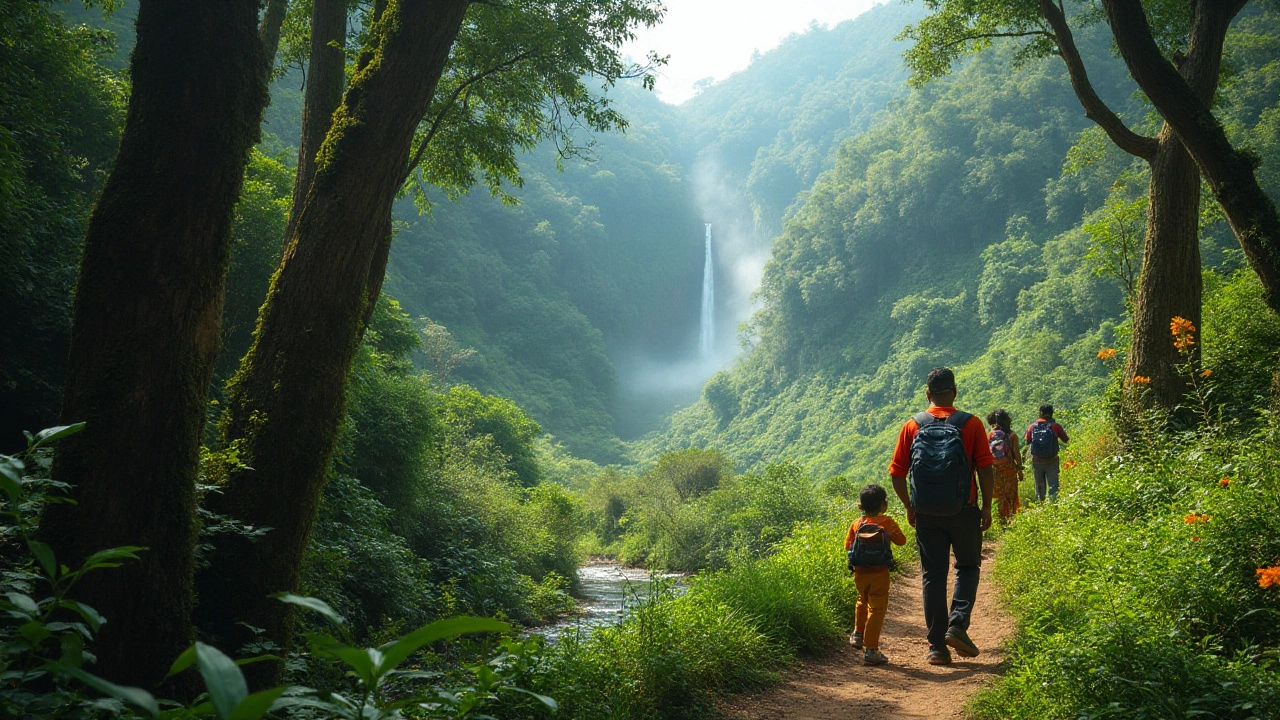
The Western Ghats: A Trekker's Paradise
The Western Ghats are a dream come true for many trekking enthusiasts, a majestic range that stretches over 1,600 kilometers from the southern tip of Gujarat, skirting the western coast of India, all the way to Tamil Nadu. This UNESCO World Heritage Site is a hotspot of biodiversity, housing a variety of flora and fauna that is both unique and richly abundant. The Ghats are woven with trails that draw trekkers from all over, offering unforgettable journeys through ancient forests, cascading waterfalls, and some of the most breathtaking ridge walks that India has to offer.
Among the many treks in the Western Ghats, the Mullayanagiri trek in Karnataka stands as the tallest peak in the region, rising to 1,930 meters. The trail takes you through coffee plantations and offers splendid views of the rolling hills and the Arabian Sea in the distance. Then there's the Chembra Peak in Kerala, famous for its heart-shaped lake, a landmark on the ascent that mesmerizes everyone who passes by. The monsoon season transforms this landscape, painting it in luxuriant greens and peppering it with vibrant wildflowers, creating scenes straight out of a fairy tale.
The Western Ghats aren't just about natural beauty; they are steeped in history and culture. Ancient forts like the Rajmachi Fort in Maharashtra hold stories of past battles and lost kingdoms. As recognized by Conservation International, this area is one of the eight 'hottest biodiversity hotspots' in the world, hosting thousands of species of plants and animals. This fact alone makes it a fascinating destination for trekkers who love to mix their hikes with ecological exploration.
According to National Geographic, "The Western Ghats make up one of the world's ten 'hottest biodiversity hotspots,' boasting more than 7,402 species of flowering plants, 139 mammal species, 508 bird species, 179 amphibian species, 6,000 insect species and 290 freshwater fish species."
Indian trekking spots in the Ghats range from beginner-friendly hikes to challenging climbs that test even the hardiest of adventurers. For example, the Kudremukh trek, known for its mesmerizing landscapes, is a favorite among those looking for a trek that's both rewarding and challenging. It's a place where myths thrive, with many a story shared around campfires under the expansive night sky. Yet, every step in the Western Ghats is accompanied by the rhythm of the native wildlife and the whisper of the wind through the peaks and valleys. A trek here is more than just a climb; it's a symphony for the soul.
Cultural Insights on Indian Treks
Trekking through the diverse landscapes of India is not just a journey through stunning natural vistas but also a journey through a cultural tapestry that has evolved over centuries. Each region you trek introduces you to a plethora of traditions, languages, and customs that seem to change with every mountain pass and valley. The symbiotic relationship between the land and its people is palpable and often adds an enriching layer to the trekking experience. This cultural immensity is pronounced especially on treks through regions like the Himalayas, where you'll encounter remote mountain communities that have maintained their unique ways of life amidst the challenging terrains they call home.
On a trek in Ladakh, in the far north, for instance, you may stumble upon monasteries that cling dramatically to cliffsides, echoing with chants. These spiritual hubs are not just places of worship but also storehouses of history and culture, where you can learn about Tibetan Buddhism and local traditions. Many trekkers find their journeys enriched by the warmth of the Ladakhi people, who are as much a part of the stunning landscapes as the rugged cliffs and high-altitude passes. It's not uncommon for trekkers to be invited into homes and monasteries, where they are offered butter tea, a staple in these high reaches. Trekking in India often means meeting locals who carry on traditions of hospitality and storytelling.
In the Western Ghats, your trek might take you through regions inhabited by indigenous tribes who have lived in harmony with the forests for generations. These tribes, like the Todas or Irulas, have deep knowledge about medicinal plants and wildlife. Learning from them not only broadens your understanding of the diverse flora and fauna but also offers a glimpse into sustainable living practices. Engaging with these communities provides a chance to appreciate the balance they maintain with nature, reminding trekkers of the importance of respecting the environment. As one tribal elder once remarked, "We do not inherit the earth from our ancestors; we borrow it from our children."
"Traveling—it leaves you speechless, then turns you into a storyteller." — Ibn Battuta
The varied states through which India’s treks run offer a beautiful blend of languages, cuisines, and customs. In Himachal Pradesh, for example, many treks pass through villages where ancient festivals and folklore paint a vivid picture of the region's past. Festivals like Dussehra and Holi are celebrated with fervor and offer a riot of colors and joy, often inviting trekkers to partake in the festivities. Meanwhile, the aroma of local cuisine, such as Himachali Dhaam, can reel you into an experiential journey of taste.
While experiencing Indian trekking spots, it's fascinating to note how deeply entrenched spirituality is in daily life, often reflected in the routes you take. Many trekking paths, such as those leading to the sacred sites of Kedarnath or Vaishno Devi, double up as pilgrimage routes. The spiritual undertones of these treks add an ethereal aspect, as you trek alongside pilgrims moved by faith and devotion. The chants and prayers along the paths reverberate in the mountains, creating a serene and sometimes mystical atmosphere.
Understanding these cultural insights not only shapes a richer trekking adventure but also curates a thoughtful and respectful interaction with the land and its people. So, as you traverse through the trail, take a moment to pause and immerse yourself in the immeasurable depths of culture that lie ahead. You'll find that the journey isn't just about mountain peaks and mysterious valleys, but also about the connections made and the stories shared.
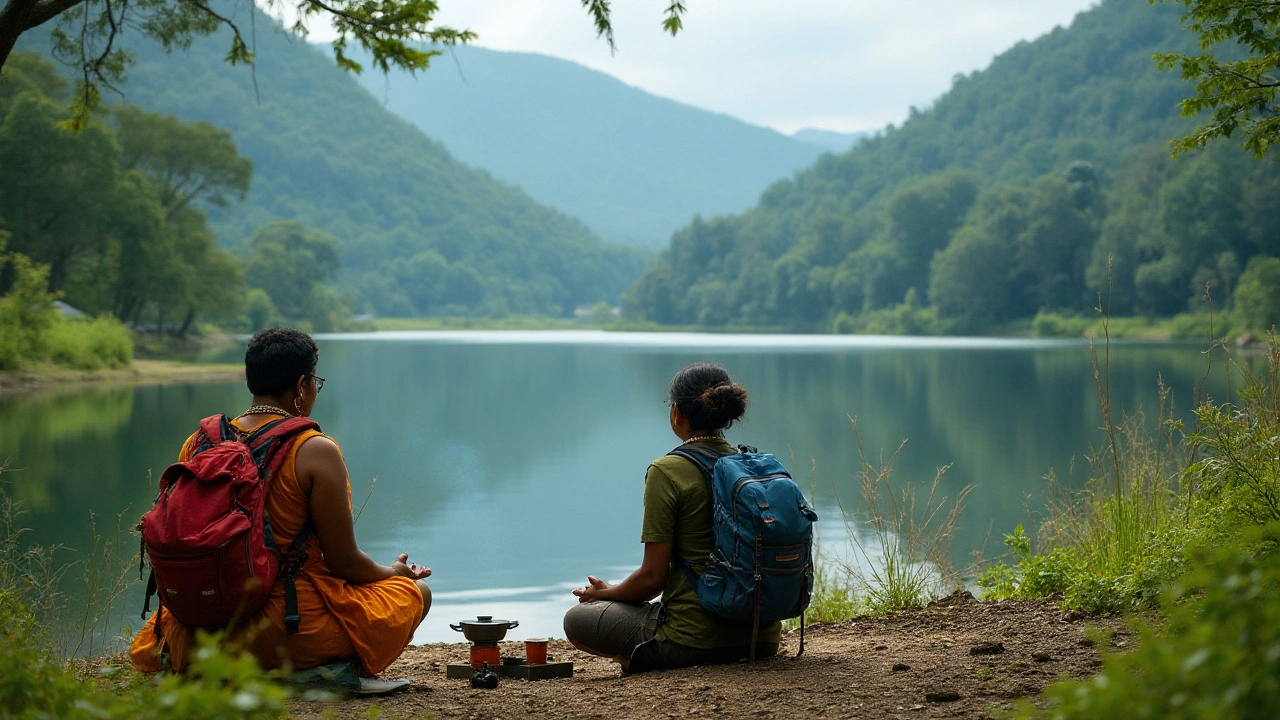
Tips for a Successful Trekking Experience
Embarking on a trekking adventure in India’s stunning landscapes is undeniably rewarding, but it requires meticulous planning and consideration to ensure safety and enjoyment. The first and foremost tip is to thoroughly research your chosen trekking route, whether it’s high-altitude adventures in the Himalayas or the lush escarpments of the Western Ghats. Understanding the difficulty level, terrain type, and local weather conditions can make a substantial difference in preparation and mindset. Equally important is gauging your physical fitness level, as getting into shape well before your trip will prevent exhaustion and mishaps: no rocky trail should be attempted without prior conditioning.
Acclimatization is especially crucial when trekking in high altitudes, where thinner air can take a toll. Spend a couple of days at an intermediate elevation prior to starting your climb to arm your body against altitude sickness, which can be a serious concern. A handy calendar detailing elevation changes aids in planning rest days and gradual ascents. Consider packing a pulse oximeter to monitor blood oxygen levels if high altitudes are on your itinerary. Trekking in India isn’t just about physical demands; it also touches your soul with the peace and tranquility it offers.
Equip Wisely and Prepare for Safety
Your trekking gear should be given thoughtful attention from the start. When you’re navigating the unpredictable weather on Indian trails, layers are your best friend. Invest in moisture-wicking fabrics and a reliable waterproof jacket to brave the elements. Good quality hiking boots with sturdy ankle support are indispensable for tackling rugged paths and avoiding injuries. Remember to break in new boots before setting foot on the trail. Don’t forget a well-stocked first aid kit complete with antiseptics, bandages, and medication for common ailments like motion sickness or diarrhea – after all, preparation trumps remedy in remote locales.
Strongly consider using trekking poles on uneven terrain; they can significantly alleviate the strain on your knees and joints. Carry a map and a compass to navigate trails, supplemented by a GPS device just in case technology fails. Knowing your location and the nearest landmarks prevents panic in emergencies. A portable charger ensures your communication devices are always operational, and emergency contact numbers should be saved and written down in a secured place. It’s best to trek with companions or local guides familiar with the area, enhancing safety and cultural understanding.
Packing Essentials for an Unforgettable Trek
Packing smart is crucial to avoid carrying unnecessary weight while ensuring all essentials for your trek are in your backpack. Prioritize a powerful sunscreen and lip balm as mountain sun exposure can be quite intense. Hydration is your closest ally, so keep water purification tablets and a durable water bottle at hand. Consider energy snacks such as nuts, granola bars, or dried fruits for on-the-go nutrition. While digital cameras are great for capturing memories, a lightweight journal is a wonderful way to record personal reflections during serene rest stops amidst nature.
Susan Elderkin, an acclaimed travel writer, once said, "Travel is not reward for working, it’s education for living." Trekkers often find this true when exploring Indian trekking spots, returning home with fresh perspectives on life.
Avoid plastic bags and containers as a nod to eco-friendly trekking, opting for alternatives like reusable mesh bags. Finally, keep extra cash in small denominations, as remote areas may not support digital transactions, and certain villages rely heavily on cash. Traveling light not only helps you move more freely but shows respect for the environment and cultures you’re privileged to explore.
Essential Gear and Preparation
Embarking on a trek in India requires more than just enthusiasm and a thirst for adventure. Proper preparation and the right gear are crucial to ensure a safe and pleasurable experience. The diversity in India's trekking trails, ranging from the icy peaks of the Himalayas to the humid trails of the Western Ghats, demands specific gear suited to varied climates and terrains. Prior to setting off, it's critical to research the weather conditions and topography of the chosen location. For those venturing into the Himalayas, layering is key. Carry thermal wear, waterproof jackets, and sturdy trekking boots designed to handle rugged, uneven paths. In contrast, treks through the Western Ghats will require breathable clothing, swift-drying socks, and effective insect repellent. Remember, the wrong footwear can ruin a trek, so investing in good quality boots is paramount.
The backpack is another vital component of your trekking ensemble, serving as your lifeline throughout the trek. When selecting a pack, prioritize durability and comfort over style – your back will thank you later. Opt for a backpack that offers at least 50-60 liters of capacity, providing ample room for essentials like a first-aid kit, multi-tool, and a hydration system. Speaking of hydration, the importance of water purification tablets or a reliable filtration method cannot be overstated, especially in remote areas where clean water may not be readily accessible. Pack energy-dense snacks such as nuts, dried fruits, and granola bars to refuel on the go. However, don't overwhelm your pack; remember that every ounce will be carried on your back for miles.
"The art of trekking lies not just in moving forward but being prepared for every twist the trail throws at you," says Tenzing Norbu, a renowned Himalayan guide.
Planning extends beyond packing; mental preparation is equally significant. Trekking in India often means navigating through unfamiliar terrain and weather changes, which can be daunting for beginners and experienced trekkers alike. Recognizing your fitness level and gradually building stamina before the trek will make the experience more enjoyable. Cardiovascular exercises combined with strength training targeting the legs and core can substantially benefit your trekking endurance. Familiarize yourself with basic trekking etiquette and support local communities by respecting cultural practices and leaving no trace but footprints. Additionally, consider enrolling in a short wilderness first-aid course if you plan to head out into isolated areas without a guide. Safety first, always, so educate yourself about route-specific challenges and readily available emergency resources.
For those who appreciate the details, here’s a quick gear snippet for guidance:
- Backpack (50-60L) with rain cover
- Insulated clothing, depending on trek altitude
- Quality trekking boots with strong grip
- Multi-tool, headlamp, and extra batteries
- First-aid kit with essential medications
- Navigation tools: maps, compass, and GPS device if possible
In this journey, embrace the philosophy of listening to your body and adjusting your pace, because the true beauty of trekking lies in the journey itself, not just the destination. Preparing well puts your mind at ease and lets you savor the heart and soul of Indian trekking spots without distraction. As the saying goes, 'A trek is not a mission, but a moment; enjoy it well.'
